
Genuine leather clothes, accessories and furniture are stylish, but often very expensive. Unfortunately, the porous surface of leather makes it highly susceptible to mildew buildup in humid climates if it's not properly cared for. With a few preventative measures and a conscientious attitude toward cleaning and caring for your leather items, though, you can protect your purchases, prolong their life and keep them in top condition.
Use leather protector on all leather surfaces. When you buy anything made of leather, especially shoes or other items likely to come into contact with moisture or humidity, the retailer will offer you a waterproof or stain-protecting spray. It may seem like an unnecessary add-on, but it's very important to use on your leather product. There is not much difference between protective sprays: The one you got for your leather jacket will be just as good for a leather purse. Be sure to use it soon after getting home with your purchase. Follow the directions on the can.
Hang leather garments properly. Use padded hangers to keep garments from losing their shape. Cover them with a large, dry cloth to keep them from gathering dust. Avoid using plastic as a protector for long periods; leather lasts longer when it can "breathe."
Keep accessories and bags in boxes. Many manufacturers of leather bags will include a dust bag with the purchase. Their products should be stored in these when you're not using them. Keep them in boxes for long periods of storage, and use silica gel packets to absorb excess moisture.
Use a dehumidifier to reduce moisture in the air. You can buy small, disposable ones to keep leather jackets dry during the humid summer months when you likely won't be wearing them. If you live in a consistently humid climate, consider buying larger units to keep your home drier and protect your leather. This is especially important if you have leather furniture.
Position leather furniture in your home where it will receive the least amount of direct sunlight throughout the day. UV rays can damage and fade leather. Also be sure to keep it away from heat sources in your home.
Related Articles

How to Protect the Backs of Shoes While ...
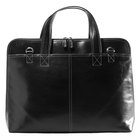
How to Prevent Mold Mildew on Leather

How to Take Care of the Leather for Red ...

How to Remove a Hang Tag

Can You Freeze Homemade Calzones?
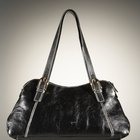
Ways to Dye Leather Fabric

How to Care for Stingray Boots
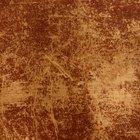
How to Restore Flaking Leather

How to Restore a Crocodile Purse

How to Care for Leather With Saddle Soap

How to Recycle Popcorn Tins

How to Clean a Leather Hobo Bag

How to Care for Ariat Cowboy Boots

Care of Alligator Boots
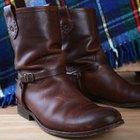
How to Care for Frye Boots

How to Prepare UGG Boots for First Time ...
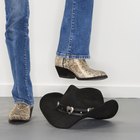
How to Care for Snakeskin Boots
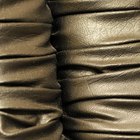
How to Restore Leather Smell

How to Keep Your Purse Smelling Fresh

How to Keep Snake Skin in Good Condition
References
Writer Bio
Jennifer Reynolds is a professional writer covering crafting, electronics and entertainment topics. She graduated in 2010 with a Bachelor of Arts in professional writing from York University.
Photo Credits
closet image by pearlguy from Fotolia.com